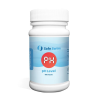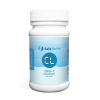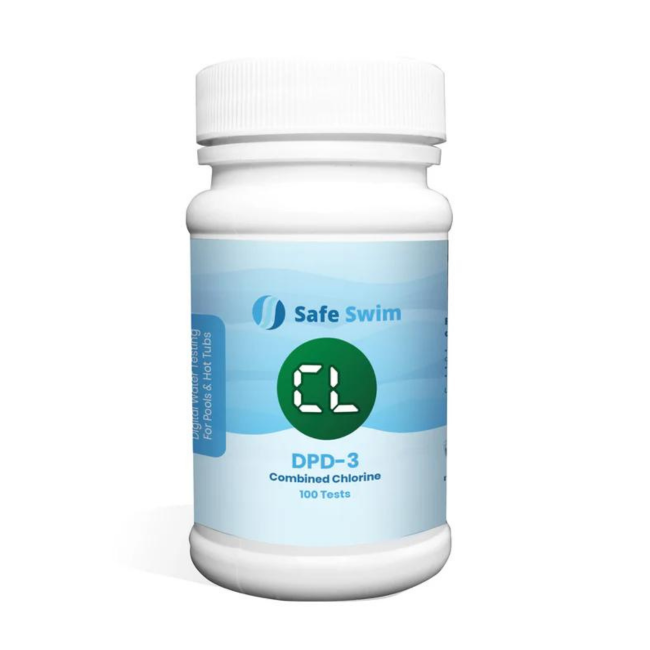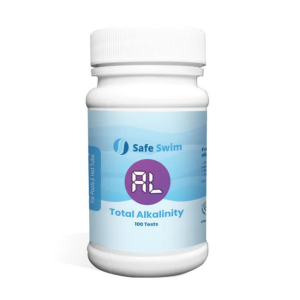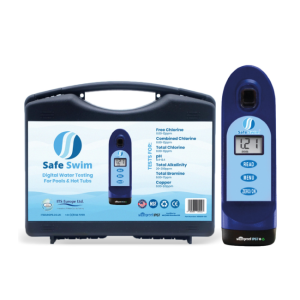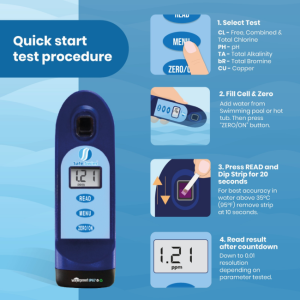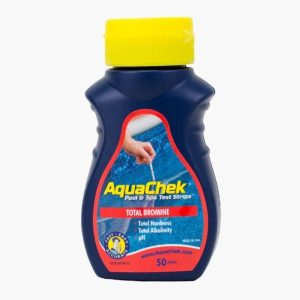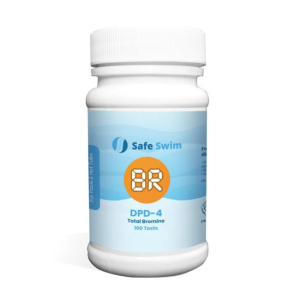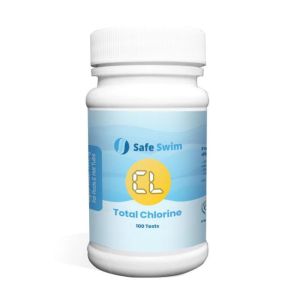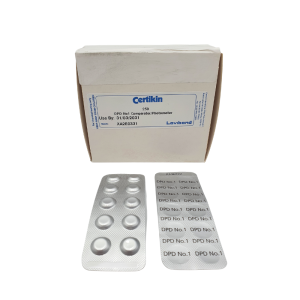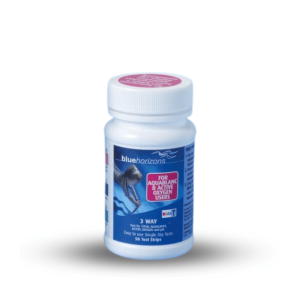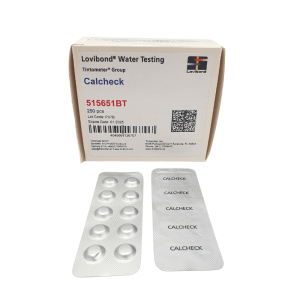Safe Swim® Test Strip – Combined Chlorine (DPD-3) | 486638-IES
£10.99 Inc VAT
Professional Combined Chlorine Testing
Product Overview
The Safe Swim® Combined Chlorine (DPD-3) test strips are professional-grade testing tools designed to measure total and combined chlorine levels in pool and spa water. These precise strips help maintain optimal water chemistry and ensure a comfortable swimming environment.
Key Features
- Advanced DPD-3 testing technology
- Dual-reading capability for total and combined chlorine
- Professional-grade accuracy
- Moisture-proof container
- Rapid color development
- 50 strips per bottle
Understanding Combined Chlorine
Combined chlorine testing is essential for:
- Detecting chloramine formation
- Preventing eye and skin irritation
- Eliminating unpleasant chlorine odors
- Maintaining proper sanitization levels
- Optimizing shock treatment timing
How to Use
- Extract one strip from the bottle
- Dip into water sample for 2 seconds
- Hold level for 15 seconds
- Compare with color chart
- Calculate combined chlorine (Total chlorine minus Free chlorine)
Technical Specifications
| Specification | Detail |
|---|---|
| Test Parameter | Combined Chlorine (DPD-3) |
| Measurement Range | 0-10 ppm |
| Resolution | 0.5 ppm |
| Response Time | 15 seconds |
| Testing Method | DPD-3 Chemistry |
| Storage Temperature | 15-30°C |
| Shelf Life | 24 months |
| Quantity | 50 strips |
| Accuracy | ±0.2 ppm |
Storage Instructions
Store in the original container with cap firmly sealed. Keep in a cool, dry area away from direct sunlight and chemical storage. Avoid exposure to moisture and high temperatures.
Professional Testing Guidelines
Combined chlorine levels should ideally remain below 0.2 ppm. Regular testing helps determine when shock treatment is necessary, typically when combined chlorine levels exceed 0.5 ppm. For accurate results, test both free and total chlorine levels to calculate the combined chlorine concentration.
Pool & Spa Chemical Guide
As a retailer of pool and spa maintenance products, I've created this comprehensive guide to help you understand and maintain proper water chemistry for your pool or spa.
Water Balance Essentials
pH Levels (7.2-7.6)
The cornerstone of water chemistry that affects all other aspects of water treatment:
- Too high: Reduces chlorine effectiveness, causes scaling
- Too low: Equipment corrosion, skin/eye irritation
- Regular testing and adjustment crucial for optimal balance
Chlorine (1-3 ppm)
Primary sanitizer for most pools and spas:
- Free chlorine maintains water safety
- Stabilized chlorine provides longer-lasting protection
- Shock treatments eliminate contaminants and chloramines
Alkalinity (80-120 ppm)
Acts as a buffer for pH levels:
- Prevents rapid pH fluctuations
- Protects against corrosion
- Helps prevent scaling issues
Specialized Treatments
Water Clarifiers
Enhances filtration efficiency:
- Coagulates tiny particles
- Improves water clarity
- Reduces filter strain
Algaecides
Prevents and treats algae growth:
- Regular prevention dosing
- Brush-free formulas available
- Compatible with all sanitizing systems
Stabilizers
Protects chlorine from UV degradation:
- Essential for outdoor pools
- Extends chlorine effectiveness
- Reduces chemical consumption
Maintenance Schedule
Daily Tasks
- Check sanitizer levels
- Run filtration system
- Remove visible debris
Weekly Tasks
- Test complete water chemistry
- Balance pH and alkalinity
- Add maintenance chemicals
Monthly Tasks
- Deep clean filters
- Check stabilizer levels
- Inspect equipment
Safety Guidelines
- Store chemicals separately
- Keep in cool, dry location
- Never mix different products
- Follow dosage instructions carefully
- Keep records of all treatments
Note: Professional advice recommended for specific chemical treatments
| Supplier | 1D |
|---|
Related products
Water Testing
Bromine Tablets & Granules
Aquachek Red – Total Bromine, pH, TA, TH – 50 strips | AQC-470-1012
Water Testing

